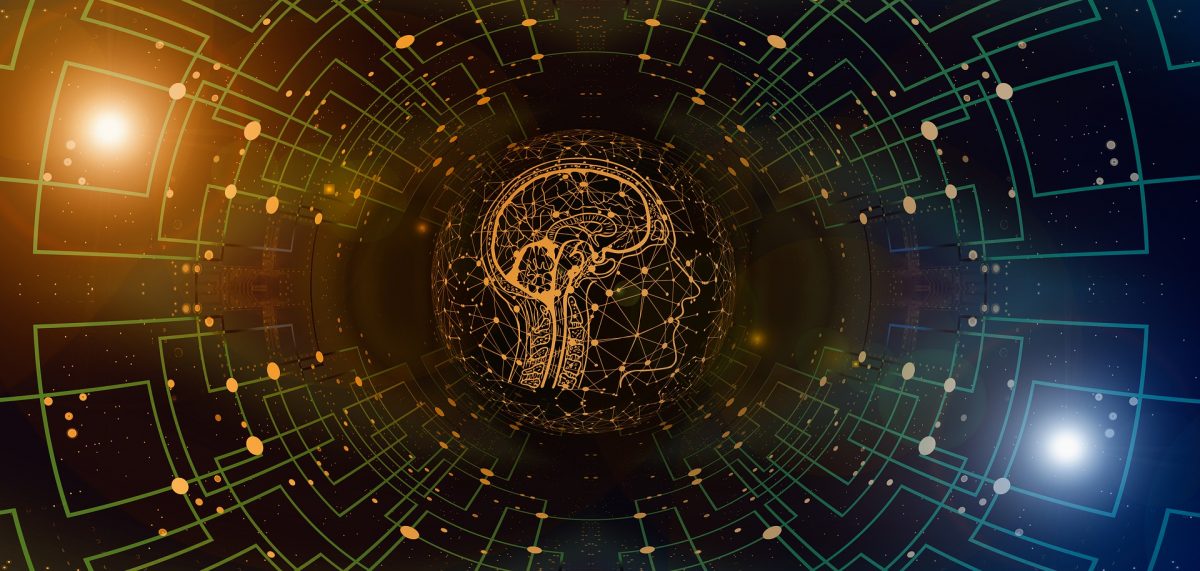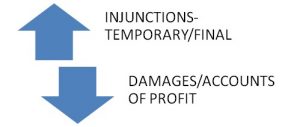This blog post has been authored by Ms. Prerna Kashyap
INTRODUCTION
The venture capital industry evolved in the late 1980s in India. Back in 1973, a committee on Development of Small and Medium Enterprises highlighted the need to foster venture capital as a source of funding new entrepreneurs and technology. The Government of India took a policy initiative and announced guidelines for venture capital funds (VCFs) in 1988 on the basis of a study undertaken by the World Bank. Slowly and gradually various rules and regulations were made to deal with the venture capital funding in India.[1]
VENTURE CAPITAL
Venture capital (VC) funds start-ups and early-stage emerging companies having significant potential for growth[2] but involves high risk.
Section 2(z) and 2(za) of the Securities and Exchange Board of India (Alternative Investment Funds) Regulations, 2012 (“AIF Regulations”) defines “venture capital fund” as an “Alternative Investment Fund which invests primarily in unlisted securities of start-ups, emerging or early-stage venture capital undertakings mainly involved in new products, new services, technology or intellectual property right based activities or a new business model and shall include an angel fund as defined under Chapter III-A” and “venture capital undertaking” as “a domestic company which is not listed on a recognised stock exchange at the time of making investments” respectively.
REGULATORY FRAMEWORK
Securities and Exchange Board of India (SEBI) is the nodal regulator for VCFs to provide a uniform, hassle free, single window regulatory framework. Various regulations such as the SEBI (Venture Capital Funds) Regulations, 1996 (“VCF Regulations”) and the SEBI (Foreign Venture Capital Investor) Regulations, 2000 have been issued on the recommendation of the Chandrasekhar committee fostering growth in the industry. As per the SEBI report relating to activities of VCFs until June this year, a total of Rs. 22,563.88 crores VCF has been raised.[3]
THE SECURITIES AND EXCHANGE BOARD OF INDIA (VENTURE CAPITAL FUNDS) REGULATIONS, 1996 AND SECURITIES AND EXCHANGE BOARD OF INDIA (ALTERNATIVE INVESTMENT FUNDS) REGULATIONS, 2012
AIF Regulations has been brought in order to replace the VCF Regulations and has been notified vide PR no. 62/2012[4] dated May 12, 2012. As per the AIF regulations, the funds registered as VCF under VCF Regulations shall continue to be regulated by the same till the existing fund or scheme managed by the fund is wound up and such funds shall not launch any new scheme after notification of these regulations. VCF may seek re-registration, subject to approval of their investors.[5]
Registration of Venture Capital Fund
VCFs are included in “Category I Alternative Investment Fund”[6]. No entity or person shall act as a VCF unless it has obtained a certificate of registration from the SEBI. Form ‘A’ lays down the instructions for the application for the grant of the certificate. Eligibility criteria are prescribed for the purpose of the grant of certificate to an applicant. Vide Explanation[7] of sub- clause (a) of sub- regulation (4) of regulation 3 of the Securities and Exchange Board of India (Alternative Investment Funds) Regulations, 2012, states that a VCF can be organized in the form of a trust or a company.
Investment Conditions and Restrictions
The AIF Regulations specify that VCFs shall state investment strategy and any material alteration to the fund strategy shall be made with the consent of unit holders; they shall raise funds through private placement by issue of placement memorandum and may launch schemes subject to filing of placement memorandum. The minimum tenure is prescribed as 3 years. Units of close- ended VCFs may be listed on the stock exchange.[8]
VCFs may invest in securities of companies incorporated outside India subject to conditions issued by the Reserve Bank of India and the SEBI. They shall invest not more than 25% of investable funds in an investee company whereas a large value fund for an accredited investor may invest up to 50% of investable funds in an investee company. They shall not offer their units to other VCFs if they are investing in units of other VCFs.
If a VCF is investing in associates/ units of VCFs managed by manager/ sponsor/by associates, approval of 75% of investors by value for investment is required. The terms of co-investment by a manager/ sponsor/ co-investor, shall not be more favourable than the terms of investment of the VCF. Un-invested portion of investable funds and divestment proceeds pending for distribution to investors shall be invested as prescribed in regulations.
Investment by VCFs in the shares of entities listed on institutional trading platforms shall be deemed to be investment in ‘unlisted securities’ for the purpose of these regulations. They shall invest in investee companies, venture capital undertaking (VCUs), special purpose vehicles, limited liability partnerships (LLPs) in units of other Category I AIFs of the same sub category or in units of Category II AIFs as specified in this regulation. They shall not borrow funds & shall not engage in leverage except for meeting temporary requirements. They shall invest at least 75% of the investable funds in unlisted equity shares or equity linked instruments of VCU or in companies listed or proposed to be listed on SME exchange and this shall be achieved by the VCFs by the end of its life cycle. For the purpose of market making, the VCF is required to enter an agreement with a merchant banker.[9]
Angel fund is a sub-category of VCF that raises funds from angel investors and invests in accordance with the prescribed provisions[10].
VCFs are exempted from certain provisions of Securities and Exchange Board of India (Prohibition of Insider Trading) Regulations, 2015 in respect of companies listed or proposed to be listed on SME exchange.[11]
SECURITIES AND EXCHANGE BOARD OF INDIA (FOREIGN VENTURE CAPITAL INVESTORS) REGULATIONS, 2000
Registration of Foreign Venture Capital Investors
The applicant shall make an application to the Board in Form A along with the application fee.[12] The applicant should be granted the necessary permission by the RBI to make investments in India. Eligibility criteria are prescribed for the purpose of the grant of certificate to an applicant.[13]
Investment Conditions and Restrictions for a Foreign Venture Capital Investor
Investor shall disclose his investment strategy and it can invest all his funds in one VCF.
A Foreign Venture Capital Investor (FVCI) shall make investment in at least 66.67% of the investible funds in unlisted equity shares or equity linked instruments of VCUs or make an investment in not more than 33.33% of the investible funds by way of:
- subscription to initial public offer of a VCU proposed to be listed;
- debt instrument of a VCU in which the FVCI already has equity investment;
- preferential allotment of equity shares of a listed company subject to 1 year lock-in period.[14]
Obligations of a Foreign Venture Capital Investor
FVCI shall maintain books of account and records for a period of 8 years. It shall appoint a custodian for custody of the securities who shall monitor the investment. It shall furnish periodic reports to the SEBI and information as required/ called for by the SEBI. It shall appoint a branch of a bank approved as designated bank by the RBI for opening of the foreign currency denominated account.[15]
SEBI MASTER CIRCULAR AND CIRCULARS
The SEBI master circular and circulars ensure an effective regulatory framework for VCFs and the SEBI. The SEBI specified guidelines stating that AIFs may invest in securities of companies incorporated outside India subject to the condition that they may invest in equity and equity linked instruments only of off-shore VCUs, subject to overall limit of USD 1500 million and mandating benchmarking of the performance of the VCFs which will help investors in assessing the performance of the VCF industry.[16]
In regard to the validity period of approval granted by the SEBI to VCFs for overseas investment, on recommendation of the Alternative Investments Policy Advisory Committee, it has been decided to reduce the time limit from 6 months to 4 months.[17]
VCFs are required to file an application to SEBI for allocation of overseas investment limit. In relation to an overseas investee company a VCF shall:[18]
- Invest in such a company, which is incorporated in a country whose securities market regulator is a signatory to the International Organization of Securities Commission’s Multilateral Memorandum of Understanding (MoU) or a signatory to the bilateral MoU with the SEBI.
- Not invest in a company, which is incorporated in a country identified in the public statement of the Financial Action Task Force.
VCFs shall furnish the sale/divestment details of the overseas investments to the SEBI in the format prescribed and an undertaking for the proposed investment shall be submitted to the SEBI by the trustee/board/designated partners of the VCFs.[19]
SECURITIES AND EXCHANGE BOARD OF INDIA (ISSUE OF CAPITAL AND DISCLOSURE REQUIREMENTS) REGULATIONS 2018
The regulations provide that FVCIs may contribute to meet the shortfall in promoters’ minimum contribution, subject to a maximum of 10% of the post-issue capital without being identified as promoter(s)[20] and contributions made by FVCIs in specified securities shall be locked-in for a period of 18 months from the date of allotment of the further public offer.[21]
SECURITIES AND EXCHANGE BOARD OF INDIA (SUBSTANTIAL ACQUISITION OF SHARES AND TAKEOVERS) REGULATIONS, 2011
Exemption in case of substantial acquisition of shares or voting rights
A VCF or a FVCI registered with the SEBI, by promoters of the target company pursuant to an agreement between such VCF or FVCI and such promoters, who has acquired and holds shares or voting rights(VRs) and exercises 25% or more of the VRs in the target company but less than the maximum permissible non-public shareholding[22], shall be exempt from the obligation to make an open offer[23] to acquire within any financial year additional shares or VRs in the company and exercise more than 5% of the VRs.
A VCF established in the form of a trust/ company/ body corporate and registered under the VCF Regulations is not considered as an investment vehicle for the purpose of the Foreign Exchange Management (Non-debt Instruments) Rules, 2019.[24]
INCOME-TAX ACT, 1961
Applicability of Angel Tax
Recently, the Central Board of Direct Taxes has issued an amended Rule 11UA (2) of the Income Tax Rules and it provides that for Section 56(2)(viib) of the IT Act, where a taxpayer is a VCU who has received consideration from the issue of unquoted equity shares to a VCF, the price of such equity shares corresponding to such consideration be taken as the fair market value (FMV) of the equity shares for resident and non-resident investors provided that:
- the consideration from such FMV does not exceed the aggregate consideration received from a VCF; and
- the consideration received by the undertaking from a VCF, within 90 days before or after the date of share issuance.[25]
WINDING UP OF A VENTURE CAPITAL FUND
Intimation of the winding up of the VCF should be given to the SEBI. VCF can be wound up in the following circumstances:[26]
If the VCF is set up as a trust, it shall be wound up:
- When the tenure of the VCF or the scheme launched by the VCF, as mentioned in the placement memorandum is over; or
- If in the opinion of the trustees and in the interest of the investors the VCF should be wound up; or
- If 75% of the investors in the VCF pass a resolution at a meeting that the VCF should be wound up.
If the VCF is set up as a LLP, it shall be wound up as per the Limited Liability Partnership Act, 2008. If the VCF is set up as a company, it shall be wound up in accordance with the provisions of the Companies Act, 1956. If the VCF is set up as a body corporate, it shall be wound up as per the statute under which it is constituted.
CONCLUSION
India has come a long way in the journey of venture capital. With the increase in the number of start-ups, more and more investment opportunities are coming up in the sectors such as biopharmaceuticals, software, financial institutions and investors and so on. This shows the significance of flexible and up-to-date regulations incorporating latest developments. The Securities and Exchange Board of India issues various circulars and directions supplementing the current regulations and this helps in regulating and facilitating the influx of venture capital investments made by residents and non- residents in India.
[1] Report of Advisory Committee on Venture Capital.PDF (sebi.gov.in)
[2] Rebecca Baldridge, Understanding Venture Capital, dated 8 June, 2023 https://www.forbes.com/advisor/investing/venture-capital/; accessed on 17 October, 2023.
[3] SEBI | Data relating to activities of Alternative Investment Funds (AIFs), accessed on 14 October, 2023.
[4] SEBI | SEBI notifies SEBI (Alternative Investment Funds) Regulations 2012, accessed on 14 October, 2023.
[5] Sub- regulation (2) of regulation 3 of the SEBI (Alternative Investment Funds) Regulations, 2012.
[6] Clause (a) of sub- regulation (4) of regulation 3 of the SEBI (Alternative Investment Funds) Regulations, 2012.
[7] Explanation.─” For the purpose of this clause, Alternative Investment Funds which are generally perceived to have positive spillover effects on economy and for which the Board or Government of India or other regulators in India might consider providing incentives or concessions shall be included and such funds which are formed as trusts or companies shall be construed as “venture capital company” or “venture capital fund” as specified under sub-section (23FB) of Section 10 of the Income Tax Act, 1961.”
[8] Chapter II, Registration of Alternative Investment Funds of the Securities and Exchange Board of India (Alternative Investment Funds) Regulations, 2012.
[9] Ibid.
[10] Sub- regulation (1) of Regulation 19A of the SEBI (Alternative Investment Funds) Regulations, 2012.
[11] Sub- clause (c) of sub- regulation (3) of regulation 16 of the SEBI (Alternative Investment Funds) Regulations, 2012.
[12] Regulation 3 of the SEBI (Foreign Venture Capital Investors) Regulations, 2000.
[13] Regulation 4 of the SEBI (Foreign Venture Capital Investors) Regulations, 2000.
[14] Regulation 11 of the SEBI (Foreign Venture Capital Investors) Regulations, 2000.
[15] Chapter IV of the General Obligations and Responsibilities of the SEBI (Foreign Venture Capital Investors) Regulations, 2000.
[16] SEBI Master Circular No. SEBI/HO/AFD/PoD1/P/CIR/2023/130 dated July 31, 2023, available at: https://www.sebi.gov.in/legal/master-circulars/jul-2023/master-circular-for-alternative-investment-funds-aifs-_74796.html, accessed on 13 October, 2023.
[17] SEBI Circular No. SEBI/HO/AFD/PoD/CIR/P/2023/137 dated August 04, 2023, available at: https://www.sebi.gov.in/legal/circulars/aug-2023/validity-period-of-approval-granted-by-sebi-to-alternative-investment-funds-aifs-and-venture-capital-funds-vcfs-for-overseas-investment_74979.html, accessed on 17 October, 2023.
[18] SEBI Circular No. SEBI/HO/AFD-1/PoD/CIR/P/2022/108 dated August 17, 2023, available at: SEBI | Guidelines for overseas investment by Alternative Investment Funds (AIFs) / Venture Capital Funds (VCFs), accessed on 14 October, 2023.
[19] Ibid.
[20] Sub-regulation (1) of regulation 14 of the SEBI (Issue of Capital and Disclosure Requirements) Regulations 2018.
[21] Clause (a) of regulation 115 of the SEBI (Issue of Capital and Disclosure Requirements) Regulations 2018.
[22] Sub- regulation (2) of regulation 3 of the SEBI (Substantial Acquisition of Shares and Takeovers) Regulations, 2011.
[23] Sub- clause (f) of sub- regulation (4) of regulation 10 of the SEBI (Substantial Acquisition of Shares and Takeovers) Regulations, 2011.
[24] Reserve Bank of India – Master Directions (rbi.org.in)
[25] Alerts: Direct Tax Alert – CBDT notifies amended Valuation Rules in respect of Angel tax, available on Direct Tax Alert – CBDT notifies amended Valuation Rules in respect of Angel tax – BDO, accessed on 18 October, 2023.
[26] Regulation 29 of the SEBI (Alternative Investment Funds) Regulations, 2012.



